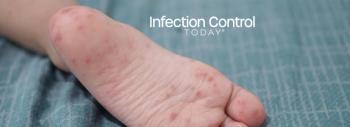
Opinion: COVID-19 Expanded Reporting Systems Should Continue
Establishing a permanent system for monitoring the persistence and emergence of dangerous pathogens is necessary, especially COVID-19.
One of the most concerning outcomes of the COVID-19 pandemic is that the CDC and other governmental agencies appear to be dismantling our newly expanded reporting systems rather than expanding and maintaining them for the next pandemic, a pandemic which many experts feel has a
Many policymakers believe the COVID-19 pandemic has all but ended, and SARS-CoV-2 has entered an endemic phase. This phase does not have huge waves but instead is characterized by
We need not only to have a permanent system for monitoring the persistence and emergence of dangerous pathogens but also to determine the composition of patients’ microbiomes. Everyone should be tested every year and upon admission to acute and long-term care facilities. This would identify pathogens and provide new insights into
Determining the incidence of dangerous pathogens in our communities and transmission in healthcare facilities is paramount. Currently, knowledge regarding community transmission and carriage of pathogens is limited. The CDC has recently recently
With their large integrative networks, health care systems should also be responsible for sampling the community and monitoring prevalence. Electronic Medical Record (EMR) systems should be enabled to automatically report infections and the microbiome composition of patients undergoing routine yearly physical examinations.
EMR reporting of infections and COVID-19 acquisitions is crucial for a modern real-time reporting system. We need this data to monitor the impact of COVID-19 and long COVID on the workforce and our society as a whole. No one knows the effects of organ system damage that will occur from decades of repeated SARS-CoV-2 infections. COVID-19 has already significantly in the United States, and in terms of workforce productivity, there is the possibility that the effects could be catastrophic.
Long COVID has
Health care-acquired infections also need to be methodically tracked and reported. Our health care system provides care to the most vulnerable in our society, and accidental exposure to dangerous pathogens can be catastrophic.
Health care-acquired infections and acquisitions should ideally be defined as:
1. For commensal organisms and viral diseases with long incubation periods, the rate of pathogen infections (and acquisitions) at a facility is higher than that found in the community.
2. For red flag pathogens, such as MRSA, Ebola, and carbapenem-resistant Enterobacterales, all infections (or acquisitions) not present on admission will be considered health care acquired. Patient risks are not a factor since they will only develop an infection (or acquisition) if exposed to the organism.
For example, the rate of SARS-CoV-2 in a facility would be calculated as the rate of SARS-CoV-2 in the facility (minus patients admitted with this diagnosis). The rate of SARS-CoV-2, which is facility onset, would be that portion of the rate greater than that found in the community.
Our tracking of facility-acquired COVID-19 infections was inadequate during the pandemic. There was insufficient data regarding intra-facility transmission to guide the upgrade of ventilation systems and to encourage staff acceptance of masking. But most importantly, this lack of data prevented the development of other effective mitigation strategies. Surprisingly, this resistance to data collection occurred at a time when health care providers and facilities had protection from COVID-19 liability.
This was simply an inexcusable situation. The United States Department of Health and Human Services COVID-19 metric captured far too few hospital-onset infections. The metric has had 3 versions:
1. The
2.
3.
Adjustments for facility performance based on patient health have caused a race to the bottom because risk adjustment allows health care not to count infections rather than prevent infections by implementing needed strategies.
There is no better example than the United States Veterans Health Administration (VHA) and its exceptionally low rates of MRSA iinfections
Control and prevention of infections are of paramount importance. We need to back away from blame. Regardless of who is at “fault” or even if any “fault” exists, if you need an internal prosthesis placed, you may not want to have this procedure in a hospital or a community with high rates of MRSA carriage or infections. Knowing and mitigating the actual numbers are important.
Newsletter
Stay prepared and protected with Infection Control Today's newsletter, delivering essential updates, best practices, and expert insights for infection preventionists.






